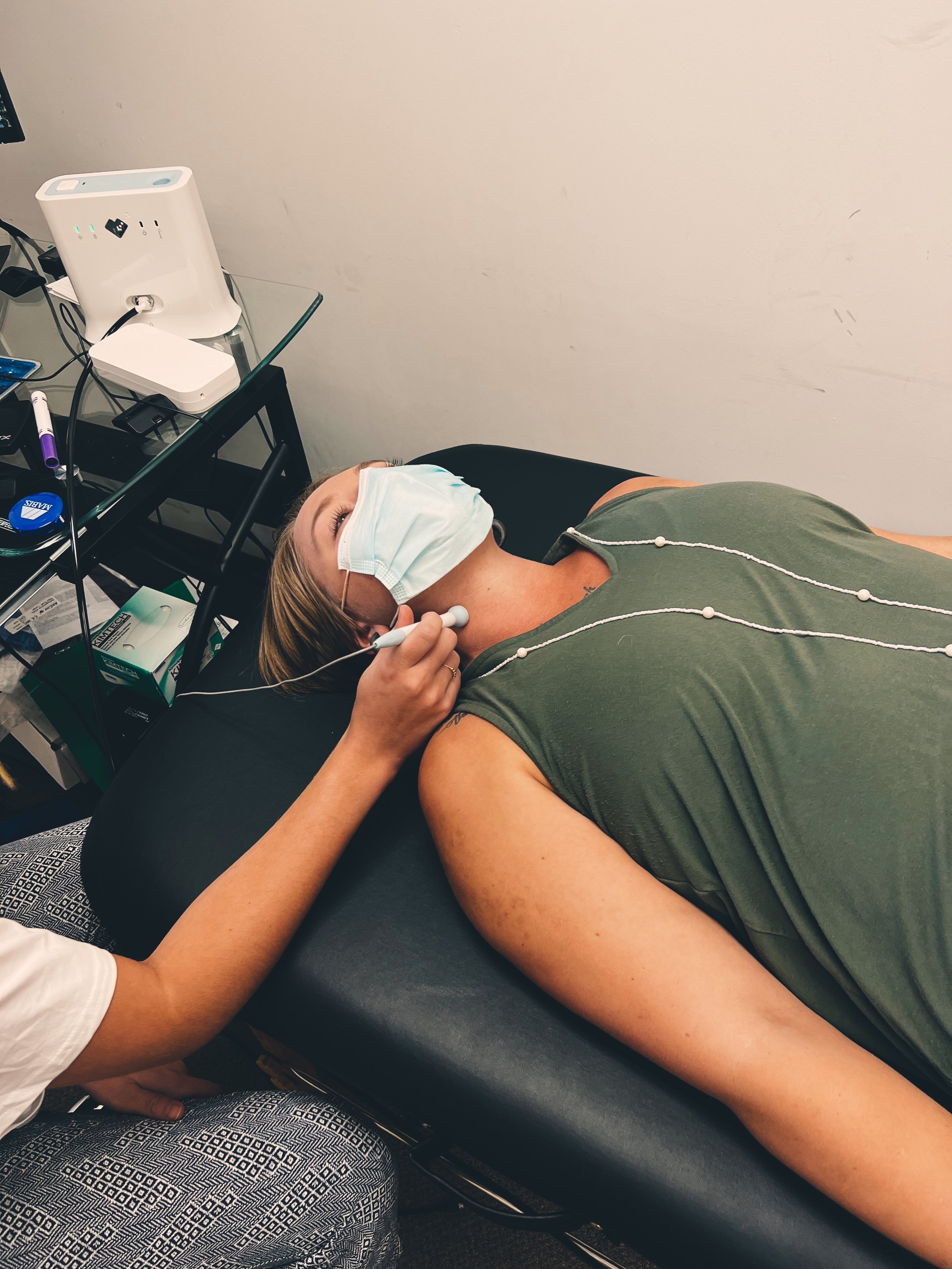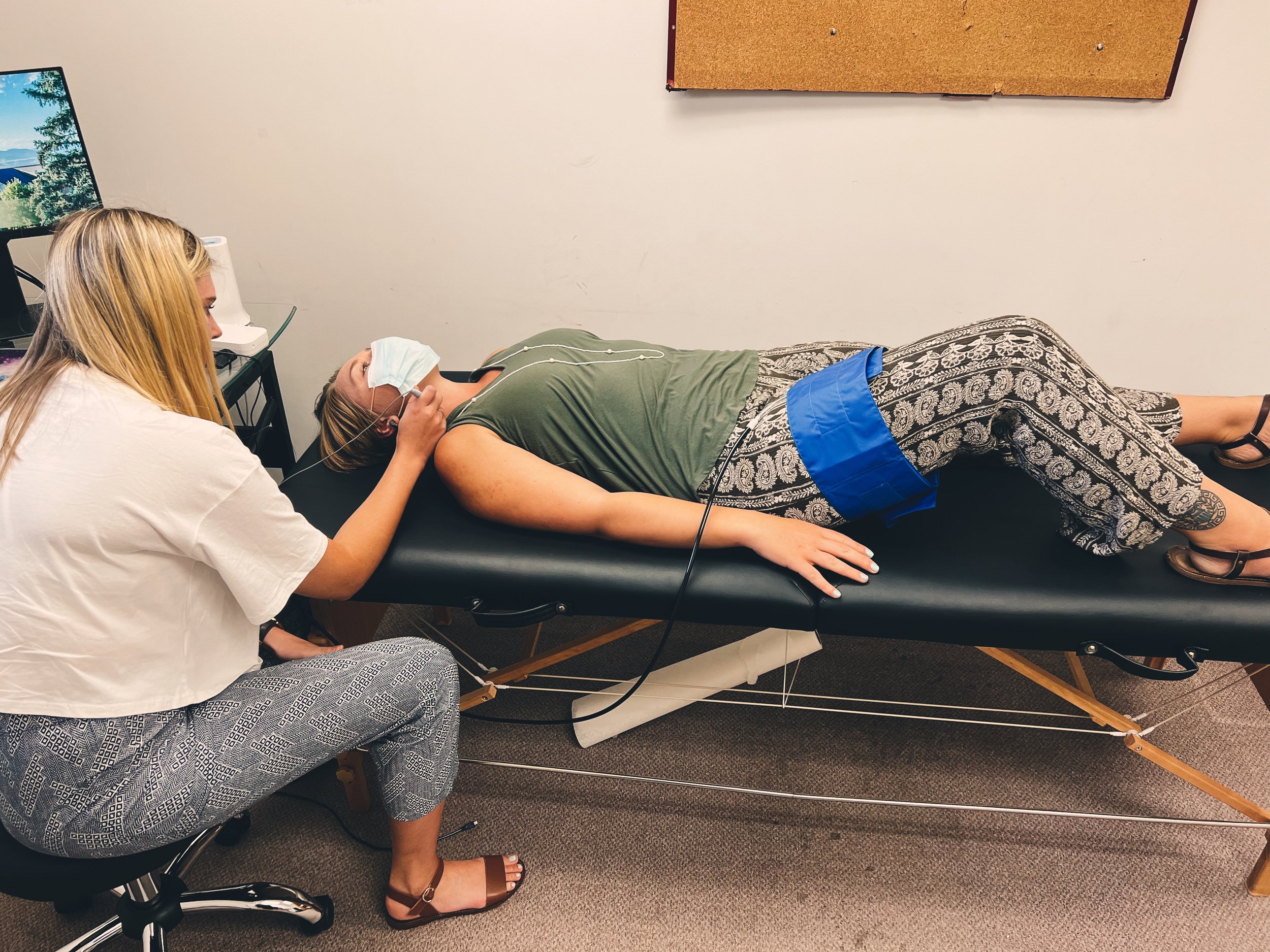Research Methods
MRI, EEG, Eye Tracking, BodPod, & Sphygmocor
TIPS AND TIDBITS FOR A SUCCESSFUL MRI WITH YOUR BABY
Bring a bottle of formula (if you are not breastfeeding) to the MRI.
Plan a feeding for the time of your appointment, if possible.
Try to keep your baby awake in the car on your way to the MRI
Bring anything that your baby uses as a sleep aid - blanket, soother, etc.
Bring extra diapers.
We have a rocking chair and soothing music/white noise to help your baby fall asleep for the MRI if more than a feeding is needed.
Your baby will only be in a diaper during the MRI to ensure there is no metal in the baby’s clothing. We use a blanket to keep baby warm and ensure they are comfortable. Your baby should have no hair accessories as they may interfere with the pictures.
Just in case we need you in the scanning room, you will need to remove your cell phone, jewelry, credit cards, hair pains, etc. and have no metal in your body. Your baby can still participate in the scan, even if you have metal in your body.
Magnetic Resonance Imaging (MRI)
what is mri? how does it work?
MRI is a safe, neuroimaging technique used by researchers to take pictures of the human brain in order to understand its structure and functions. An MRI produces an image of the brain just like an ultrasound does - it uses radio waves. The only difference is that the MRI also uses a magnet. We use the MRI as another non-invasive way to look inside the body without using X-ray or radiation. Learn more about MRI with children here.
What will happen during my MRI visit?
When you arrive at your MRI appointment, the first thing we do is remove your baby’s clothing and swaddle them in a blanket. We do this to make sure there is no metal on your baby when they enter the scanner. We will also place silicone earplugs into your baby’s ears to protect their hearing during the scan. We will take baby’s measurements (length and weight) to make sure the scanner is calibrated correctly.
Next, we ask that you feed your baby and rock them to sleep. Once baby is sound asleep, we take them back to the scanning room where we place them on a soft changing table and surround them with foam padding to make sure they don’t move during the scan. We also put headphones around your baby’s ears playing white noise to protect their hearing and to keep them sleepy. You are welcome to stay with your baby during the entirety of the scan; there is a rocking chair in the scanning room.
Once baby is completely settled, an evaluator will lie down in the MRI scanner with one hand on baby’s tummy and one hand on baby’s legs to monitor them during the scan. If baby wakes up, the evaluator stops the scan immediately and tries to soothe baby back to sleep. The scan takes approximately 45 minutes.
Once the scan is complete, we bring baby back to the waiting room and give you a CD with the MRI images on it for you to take home.
Electroencephalography (EEG)
What is eeg? How does it work?
EEG measures electrical activity in the brain. The brain is made up of about 85 billion cells, called neurons. Neurons communicate with each other using electricity and send messages very quickly throughout the brain through tiny electrical pulses. We use a small net of sensors placed in a cap on your baby’s head, and the only thing they feel is a spongy sensation. EEG helps us to see changes in activation in the brain almost as quickly as they occur!
what will happen during my eeg visit?
During your visit, the first thing we will do is measure your baby’s head. We have different sized EEG caps and want to pick the one that best fits your baby. Once we’ve decided on the correct cap size, we soak it in a solution of water, salt, and baby shampoo to make sure the sensors can get good connection to the scalp. Next, we place the cap on your baby’s head. Our research assistants are well trained, and we can take as many breaks as necessary to keep baby happy and calm during this process.
Once the cap is on, we have baby sit on your lab and look at a computer screen with different emotional faces on it. About halfway through the task, we will take a break and your baby will watch one of our research assistants blowing bubbles for a few minutes. The total time is usually around 5-10 minutes from when the cap is on to when we take it off. Of course, we will take pictures for you!
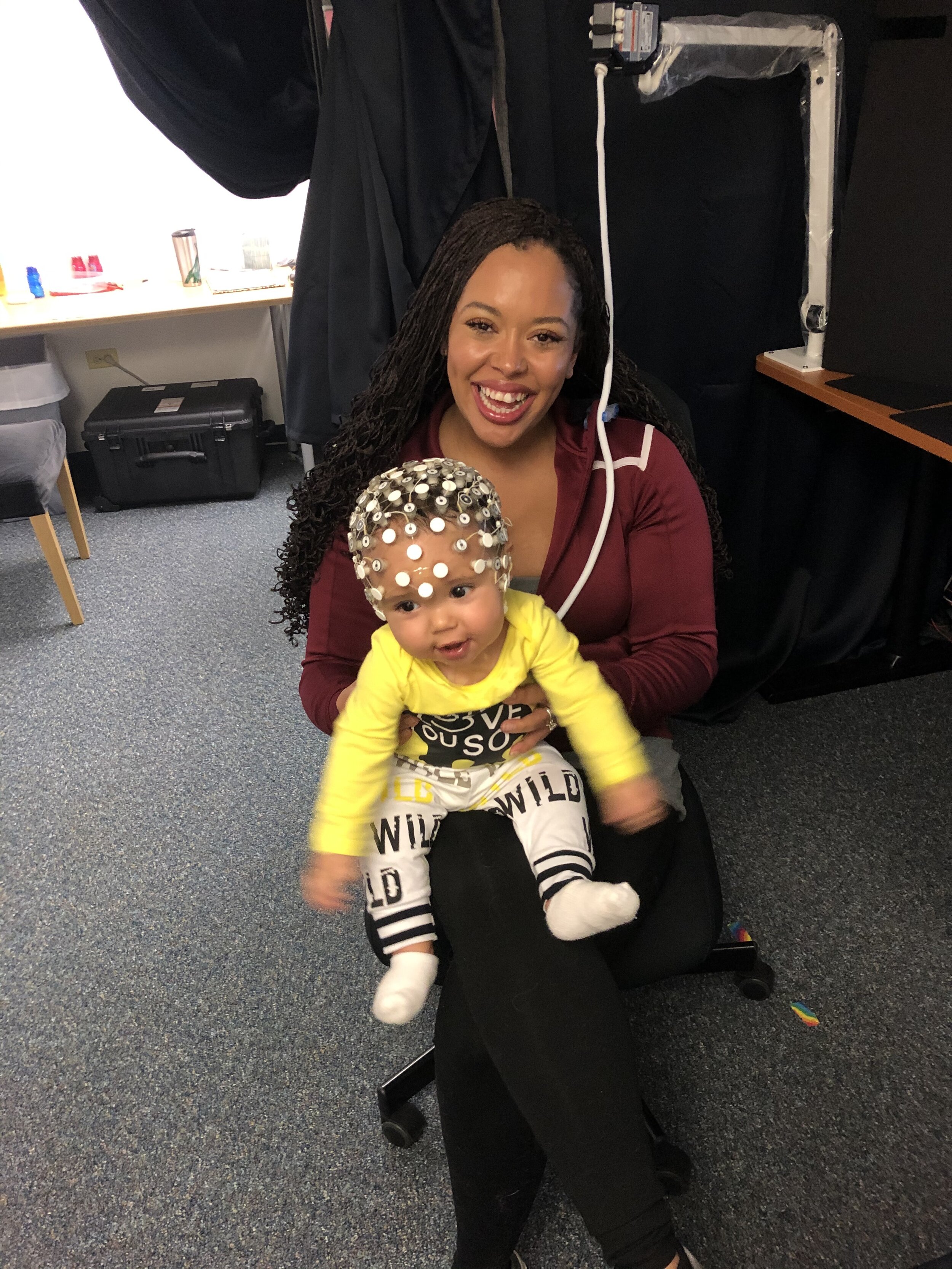
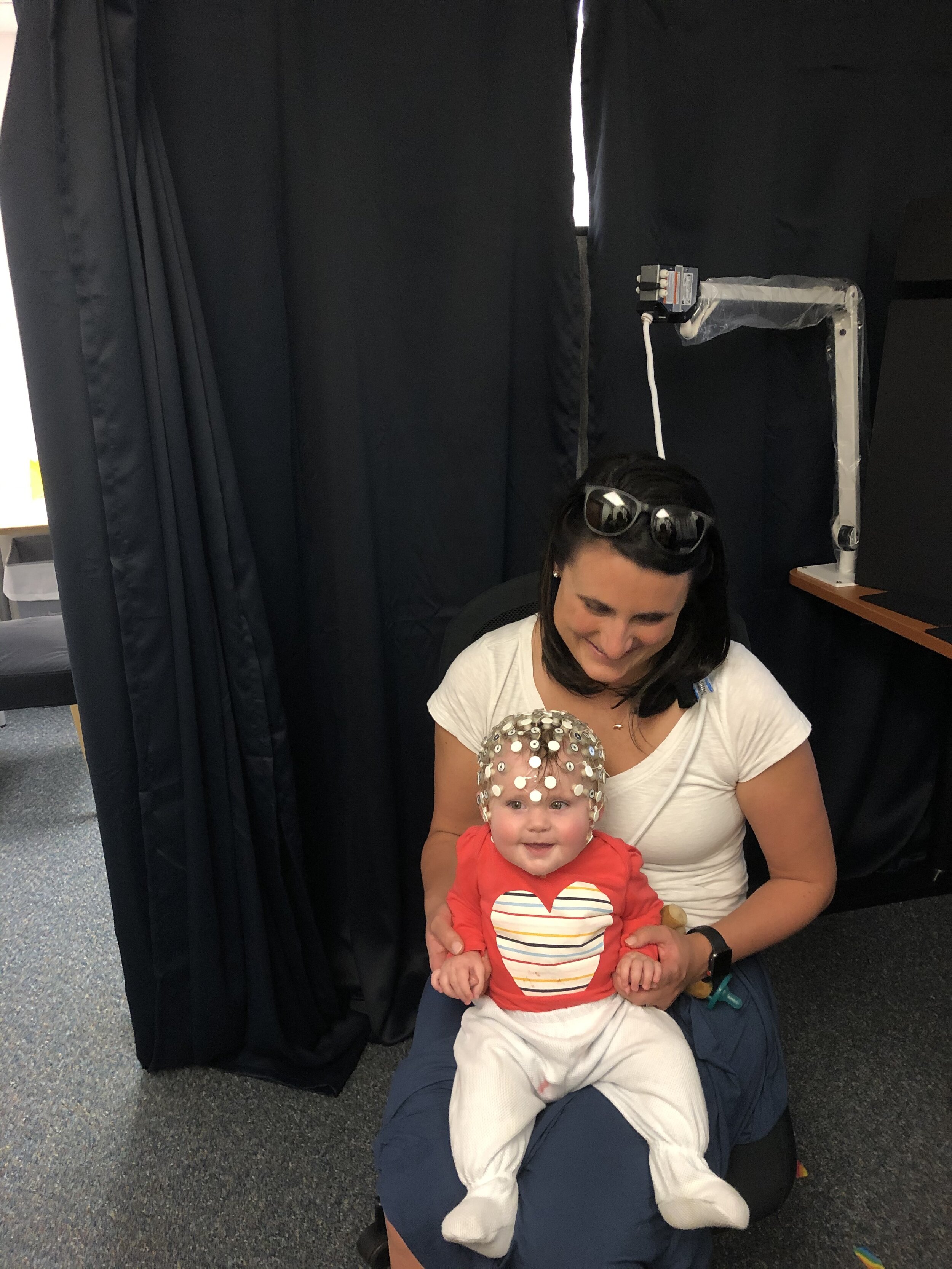
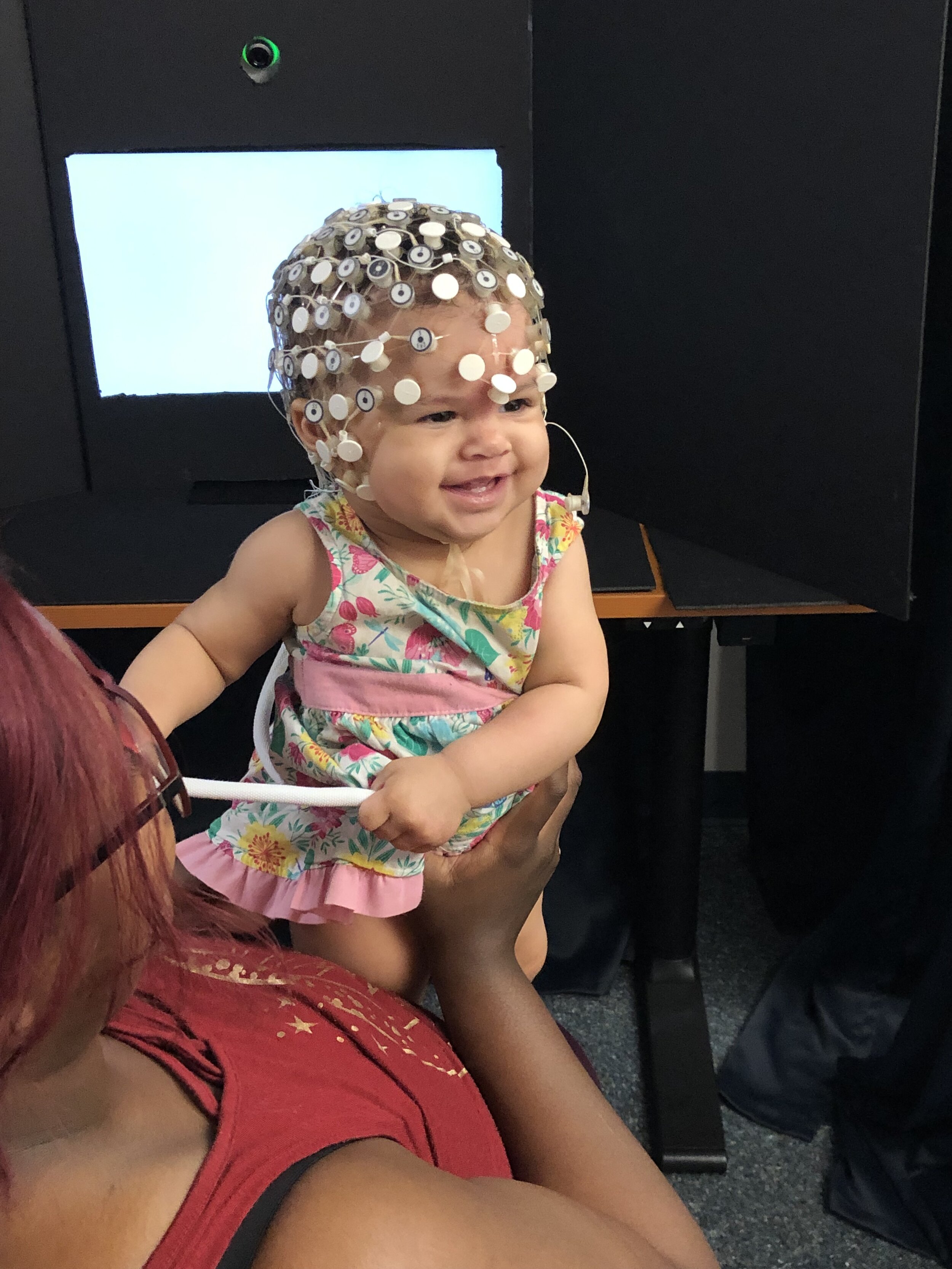
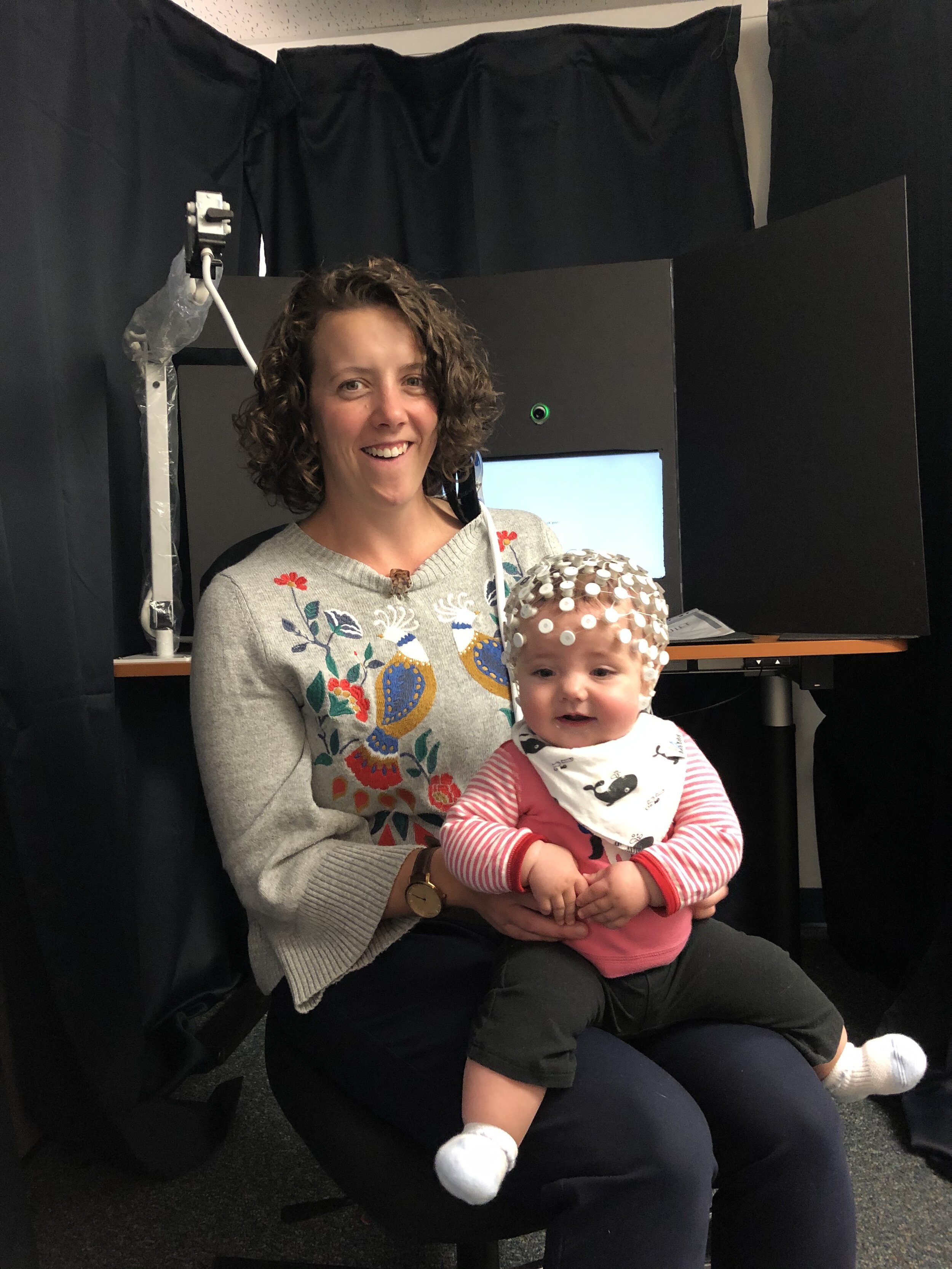
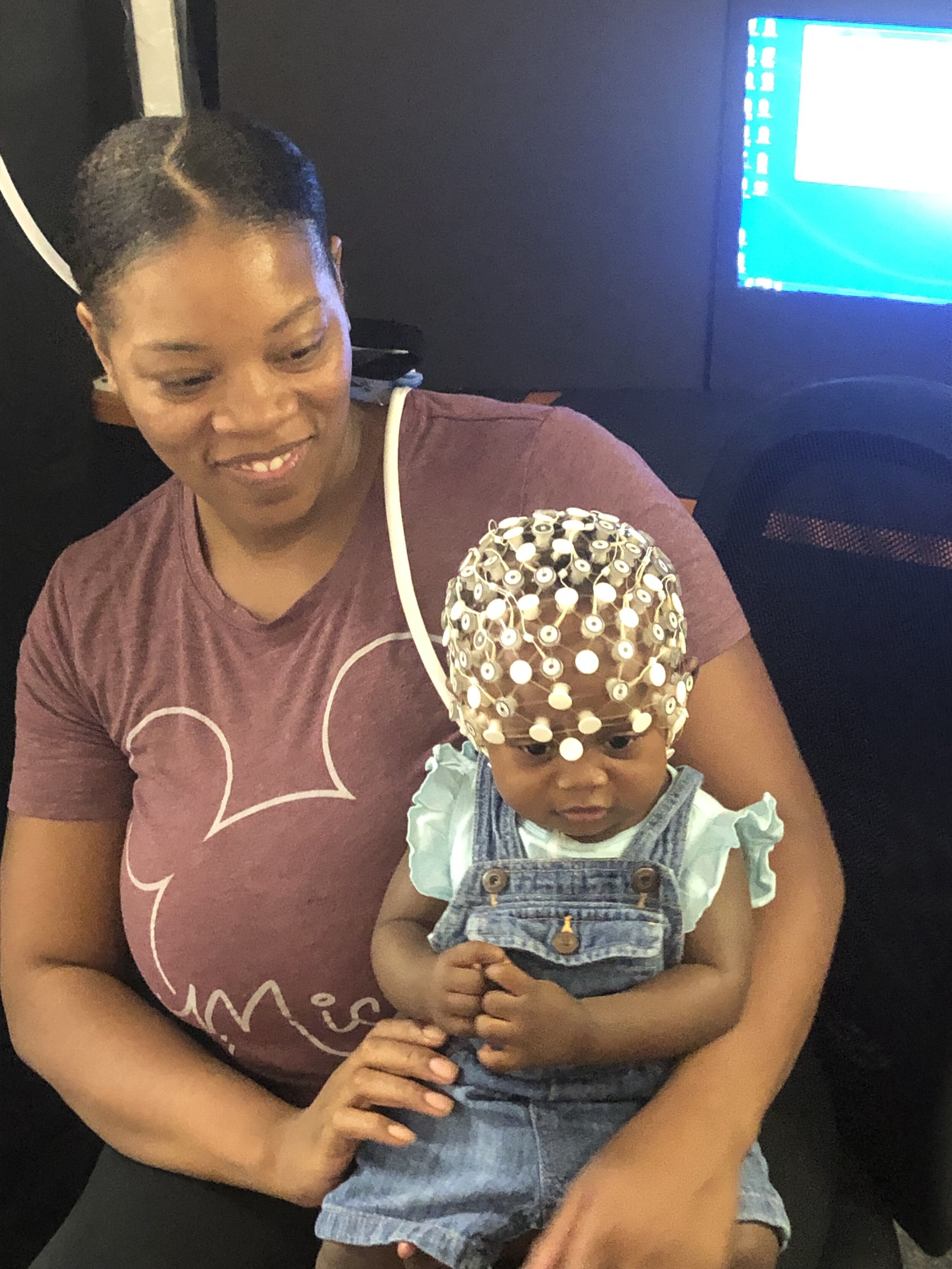


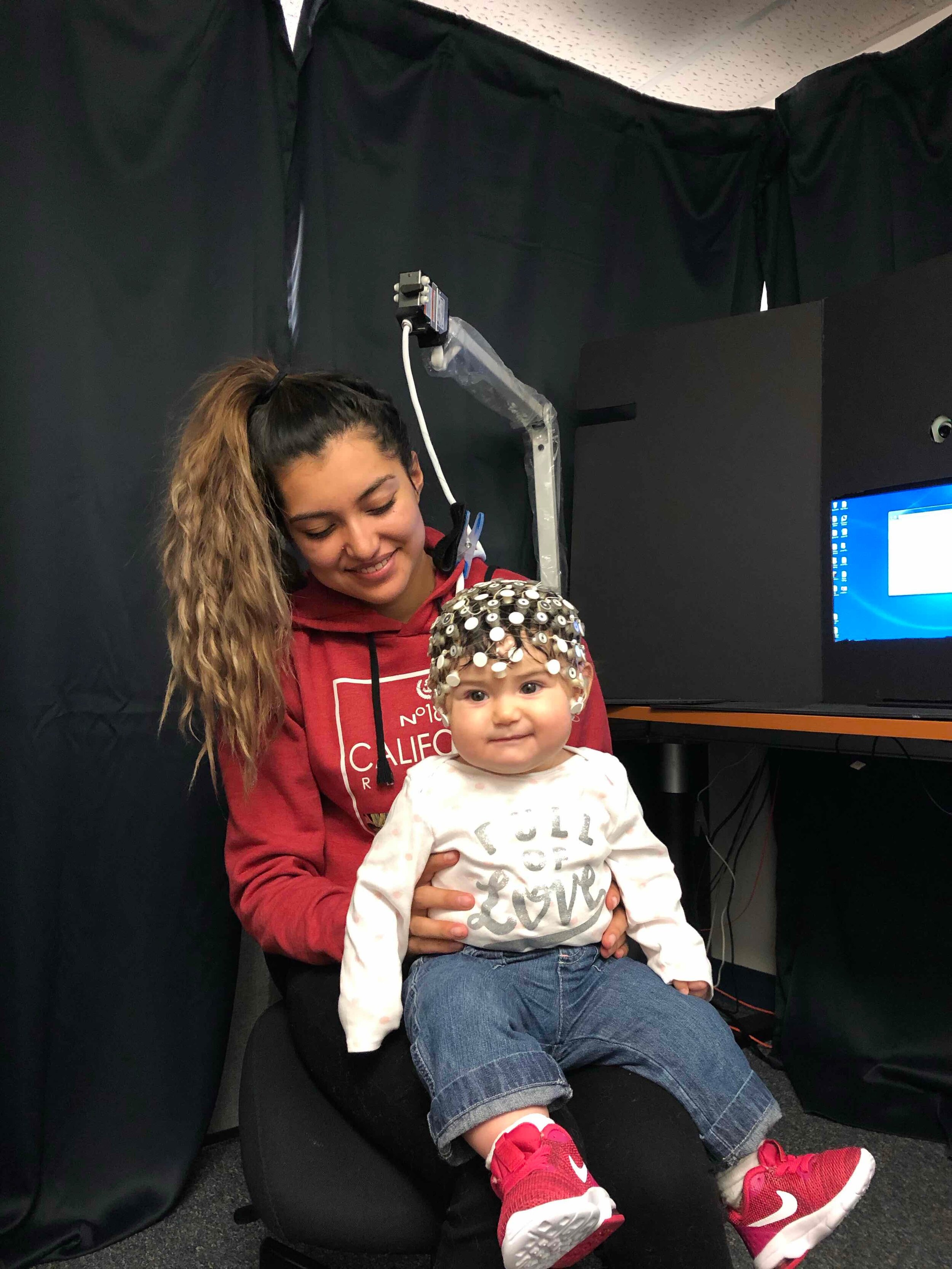
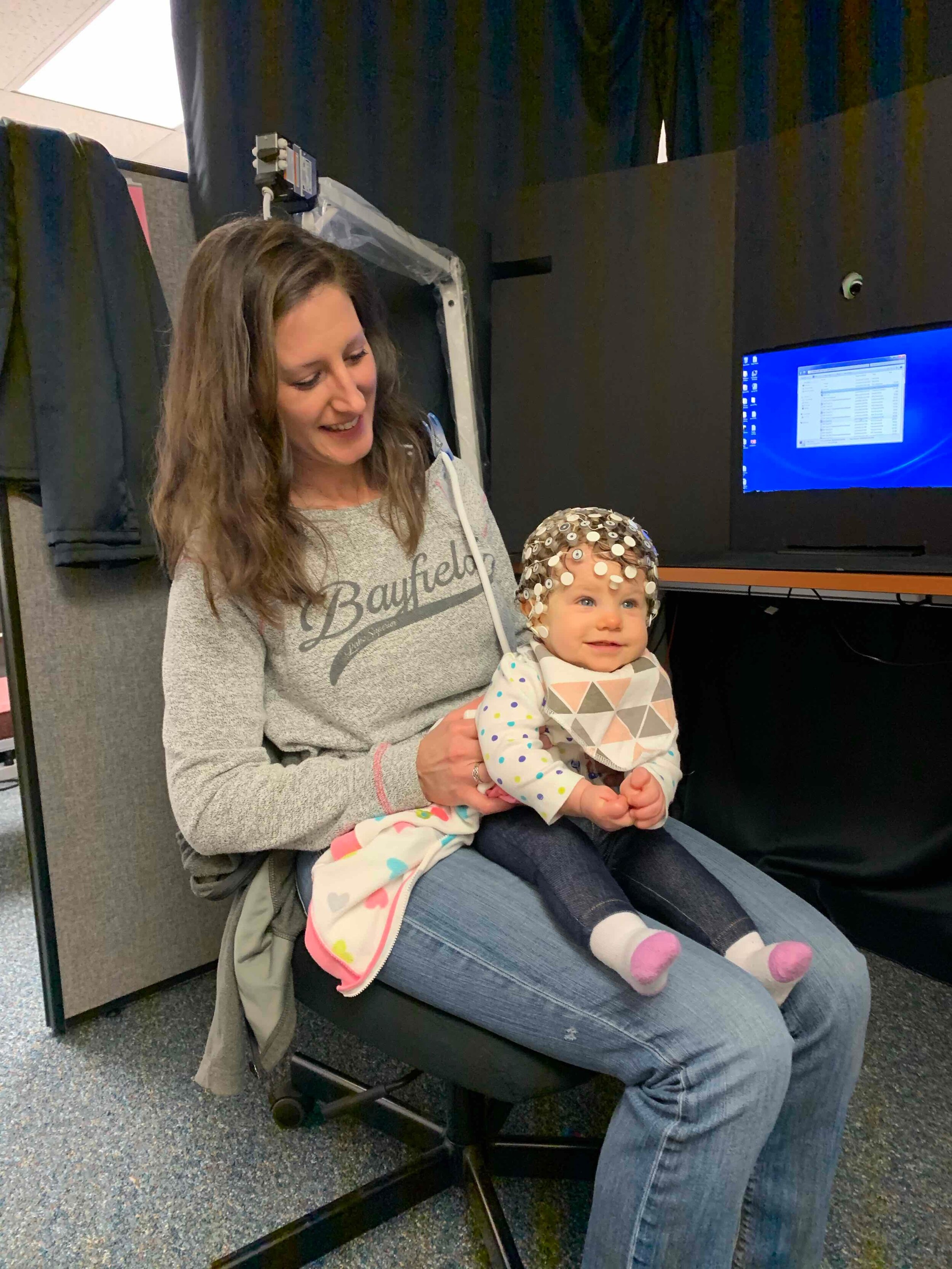
Eye Tracking
what is eye tracking? How does it work?
Eye tracking is a way to measure eye movements and find where a person is looking, what they are looking at, and for how long they are looking at a certain spot. We use eye tracking to examine visual attention and it allows us to infer about a person’s behavior and decision making.
The eye tracker shines a light onto the eye and is able to tell the direction light is reflected off the eye surface. By examining where the light is reflected, the eye tracker is able to determine where the eye was looking and for how long.
what will happen during my eye tracking visit?
During your visit, we will ask you to place your baby either in a high chair or in your lap, in front of a computer screen. The computer will show 2 faces simultaneously, one with an emotional expression (happy, sad, angry, afraid) and one with a neutral expression. The task usually lasts about 5-7 minutes, with a short break in the middle.
BodPod
What is a BodPod? How does it work?
A BodPod is a cool spaceship-looking machine that will be used to measure your child’s body composition. This is done by measuring the air flow within the chamber while your child is sitting inside of it. The outcome will help us assess your child’s cardiovascular heath. This is completely painless and a great opportunity for some cool photos to show off your child’s fun spaceship experience!
What will happen during the BodPod visit?
During your BodPod visit, we will start off by having your child change into a bathing suit and swim cap we will provide for them and that they can take home after the visit. We will then have them step inside of the BodPod and sit in a special seat inside. They will sit inside the BodPod for about 5 minutes while it measures their body composition three times. While seated in the chamber, the child will be watching a video on a tablet and will be able to see you through the window the entire time.
Sphygmocor
What is Sphygmocor? How does it work?
Sphygmocor is a fun, new technology used to measure the flexibility of a person’s blood vessels. The results are used to assess your child’s cardiovascular health. We will first put a blood pressure cuff on your child’s arm which will inflate twice, like a typical blood pressure measurement. We will then have your child lie down on the table, place a blood pressure cuff on their leg, find their pulse on their neck, and use a fancy wand to capture a reading of their arterial flexibility.
What will happen during the Sphygmocor visit?
We will first have your child sit upright, while we give their arm a “tight hug” with the blood pressure cuffs. We will then have the child lay down for the second half, when we will place the cuff on their leg. This is completely painless and we will have a tablet set up on a stand so that your child can be watching a video while the measurements are being taken. All your child has to do is sit back and relax!






